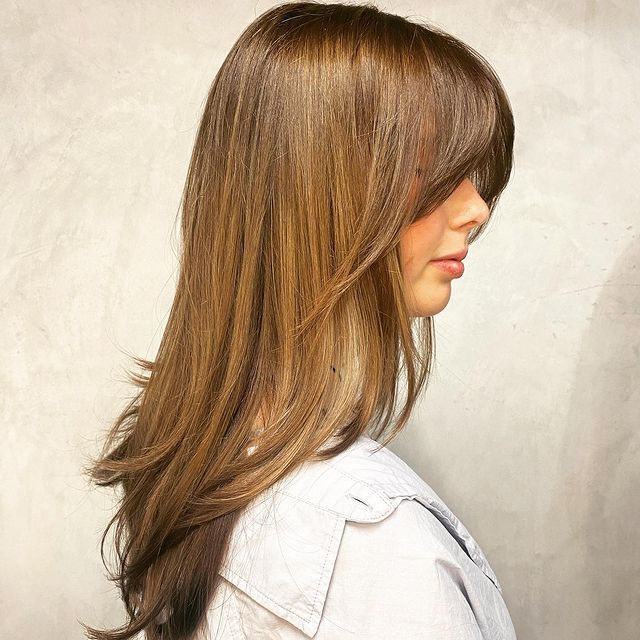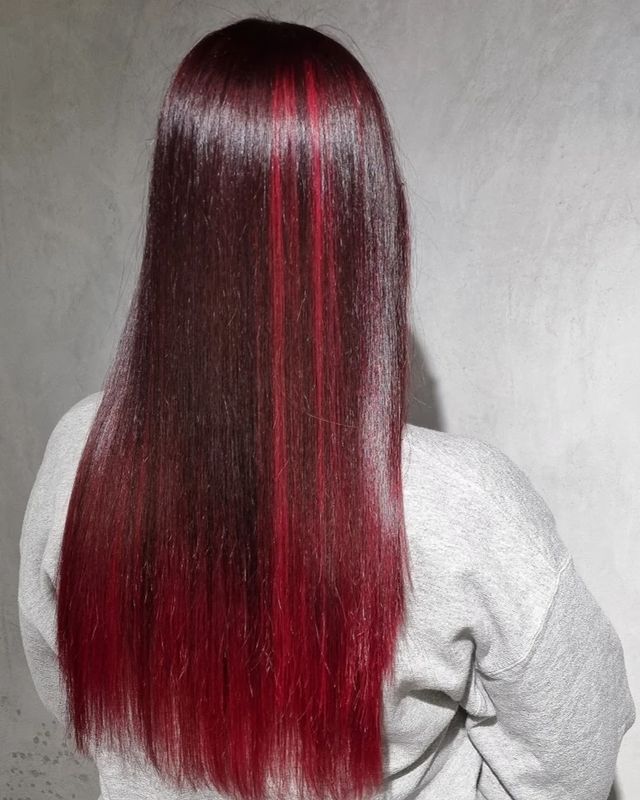Does Keratin Treatment Change Hair Colour?

When it comes to achieving silky, smooth, and manageable hair, many people turn to keratin treatments. But one question that many people ask is: does keratin treatment change your hair colour? Our talented stylists at Cutter His and Her Hairdressing can guide you through what you need to know about keratin treatments and their impact on your hair colour.
What is a Keratin Treatment?
A keratin treatment is a hair-smoothing process that tames frizz, adds shine, and reduces blow-drying time. The treatment involves applying a liquid solution containing keratin, a naturally occurring protein in hair, onto the hair strands.
This is followed by sealing the solution into the hair using a flat iron set at a high temperature. The heat activates the keratin, helping it penetrate the hair’s cuticle and repair damage. The result is smoother, straighter, and more manageable hair that lasts for several weeks or even months, depending on the type of treatment and aftercare.
While it’s primarily known for its smoothing effects, keratin is also a protective hair treatment that can make your hair more resilient against environmental factors like humidity and UV rays.
It’s suitable for all hair types, including curly, wavy, or straight hair. However, it’s important to consult a professional if you have colour-treated hair, as the treatment can sometimes alter the shade of your hair colour.
Keratin Treatment’s Impact on Hair Colour
If you’re fighting frizz or dried-out hair, you may be considering a keratin treatment to fix those issues. But you may also be wondering, does keratin treatment change hair colour?
The direct impact of a keratin treatment on your hair colour can vary depending on whether your hair is naturally coloured or dyed. While a keratin treatment’s primary purpose is not to change hair colour, it can have some effect depending on the existing condition and colour of your hair.
So, it’s always best to consult a professional hairstylist to understand how a keratin treatment might affect your hair type and colour.
Natural Hair
For those with natural hair colour, a keratin treatment is unlikely to cause any significant change in shade unless you have light brown or blonde hair. After the treatment, your hair may appear darker or richer.
This is due to the way keratin fills in the porous spots in your hair strands, resulting in a smoother, more reflective surface that can give the appearance of a slightly different hue. Essentially, your hair might look healthier, and, as a result, the colour may seem more vibrant or intensified, although the actual colour has not changed.
Colour-Treated Hair
If you dye your hair, the impact could be more noticeable. Keratin treatment can sometimes lighten your dyed hair or alter its tone. This occurs because the treatment may strip away some of the applied colour pigment. This is especially true if the keratin treatment is done soon after colouring.
Wait at least two weeks between colouring your hair and getting a keratin treatment to minimise fading.

How to Prevent Hair Lightening After a Keratin Treatment
Preventing hair lightening after a keratin treatment involves careful planning, using quality products, and getting expert advice. Some tips to ensure that your hair remains its original colour post-treatment include:
Consult Your Stylist
Before undergoing any treatment, it’s best to consult your hairstylist. They can advise you on how to best preserve your keratin treatment and hair colour.
Patch Test
Performing a patch test can help you gauge how your hair will react to the keratin treatment. Ask your stylist to test a small, inconspicuous section of your hair behind your ear on the nape of your neck. This will show you how your hair colour will be affected.
Use Colour-Safe Sulphate-Free Shampoo and Conditioner
Opt for sulphate-free shampoos and conditioners, as sulphates can strip your hair of its natural oils and colour. Using gentle, colour-safe products will help preserve the keratin treatment and your hair colour.
Wait Before First Wash
Avoid washing your hair for at least 2-3 days after the keratin treatment. This allows the treatment to fully set in and ensures that your colour remains locked into your hair strands.
Avoid Chlorine and Saltwater
Swimming in chlorinated pools or saltwater can fade hair colour and may even affect the longevity of your keratin treatment. Chlorine and sodium chloride dry out your strands and open the cuticle, allowing colour pigments to leach out. If you can’t avoid swimming, wear a swim cap.
Use Colour-Protecting Products
There are numerous sprays, serums, and treatments specifically designed to protect coloured hair. Look for products that offer UV protection to keep your colour from fading in the sun.
Limit Heat Styling
Excessive heat styling can damage keratin-treated hair and make your colour fade faster. Since a natural keratin treatment already makes your hair more manageable and easier to style, try to limit your use of hot styling tools like straighteners and curling irons. If you must use heated styling tools, always apply a heat protectant to your hair first.
Cold Water Rinse
Finish with a cold water rinse when washing your hair after a keratin treatment. Cold water helps seal your hair cuticles, making it harder for colour to wash out. This also adds an extra shine to your hair. However, limit hair washing to 2-3 times a week to prolong the life of your keratin treatment.
Go for Touch-ups
If you notice significant colour changes after a keratin treatment, don’t panic. Schedule a touch-up appointment to restore your desired hue. Ask your stylist how soon after the keratin treatment you can safely colour your hair again.

Protect Your Hair With Help From Cutters His and Her Hairdressing
Keratin smoothes and tames frizz and makes styling your hair at home effortless. However, if maintaining the exact shade of your hair colour is important, consult a professional and take all necessary precautions.
While a keratin treatment can alter your hair colour, especially if it’s colour-treated, proper planning and aftercare can minimise these effects.
For more advice or to book a consultation, contact Cutters His and Her Hairdressing. Our stylists can help you achieve the hair of your dreams while preserving the colour you love.


